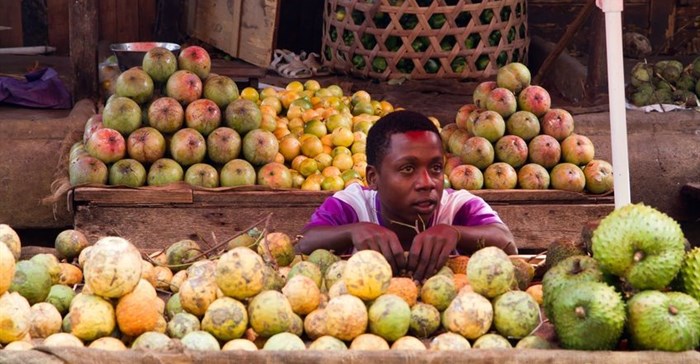
©TEMISTOCLE LUCARELLI via
123RFEven when arable land is cultivated, hurdles such as limited irrigation, small sized farms, lack of fertiliser and modern agro-technology has kept productivity low. Currently, Africa’s shortfall in agricultural output is met by food imports that are expected to grow from USD$35 billion in 2015 to approximately USD$110 billion in 2025.
Low productivity and increasing food demand – due to a 3% per year population growth rate – requires that food production be increased by 60% over the next 15 years.
India’s “Green Revolution” could be a useful model if adapted to African conditions. Half a century ago the country too had an underdeveloped agriculture sector. In the mid-1960s and early 1970s, it faced serious food shortages. And then severe famines in 1965-1966 in eastern India compelled the country to look to food aid.
The severity of the crisis gave birth to a new approach to agriculture. Known as the Green Revolution, the policy involved improvements in technology combined with state led initiatives to support farmers. Less than 10 years later India was self-sufficient in cereals.
Though imperfect, the “Green Revolution” model offers important lessons for countries in the sub-Saharan region. It underscores the importance of government support for agriculture as well as investment in technology such as irrigation, mechanisation and inputs to improve yields. Sub-Saharan Africa could learn from the Indian experience.
The Indian ‘Green Revolution’
India began to increase budget allocation to the agriculture sector when it realised that excessive dependence on food imports wasn’t viable. In 1961, at the outset of the Third Five Year Plan, it set about increasing agricultural productivity with limited land. Interventions focused on modernising the agricultural sector by:
introducing high yield varieties of seeds,
making fertilisers and insecticide more widely available,
manufacturing farm equipment,
upgrading irrigation practices, and
providing institutional support to farmers.
Institutional support played a critical role. It included government subsidies for inputs, research and development to produce new varieties of seeds and provision of irrigation facilities. Access to credit and markets, extension of minimum support prices and good infrastructure were key to the success of the Green Revolution.
A combination of increased investments and institutional support led to an overall increase in productivity.
Today, India is self-reliant in food grains. It has a shortfall in a few agro-commodities, mainly oilseeds and pulses, which are imported from various sources, including countries in Africa.
In 2015, India’s prime minister Narendra Modi, called for a second Green Revolution. This is set to engage new strategies to revitalise the agricultural sector.
Weaknesses
India’s Green Revolution came with its own limitations. Its effects were selective as only a few pockets in the country benefited. Only irrigated areas benefited while water scarce drylands lagged behind.
The states of Punjab and Haryana, which were suitable for wheat cultivation and had access to irrigation, flourished. The rice producing areas in the south and east of the country, trailed behind.
The Green Revolution also exacerbated the rural divide. Most agriculturists were smallholder subsistence farmers who could not afford expensive inputs and capital investments. This segment of farmers couldn’t access credit in the same way as large farmers who are generally landowners from the higher caste. As a result rich farmers were the main beneficiaries of increased productivity and profits.
Other problems emerged too. The capital intensive technology led to soil erosion, reduced genetic diversity and soil fertility, displacement of small farmers, rural impoverishment and increased conflict in rural settings.
Lessons for Africa
African countries could benefit from India’s “triple A” approach. This denotes “appropriate, adaptable and affordable” technology for equipment and irrigation. With some adaptation to local rural conditions, these “triple A” technologies can benefit large numbers of small holder farmers who depend heavily on income from agriculture.
And countries on the continent can avoid the shortcomings of the Green Revolution by planning ahead and ring-fencing pitfalls from the outset. This would include managing the high costs of inputs and the negative effects of excessive use of chemical fertilisers. It needs to be recognised that the shift today is towards organic farming.
Political will, state and institutional intervention are essential. This is to ensure that farmers with small farms and meagre incomes can also be part of the Green Revolution.
The crucial questions African governments should ask are:
Should the agriculture sector be viewed solely as a “business sector”?
What approaches should be adopted for financing smallholder agriculture?
How can small holder farmers with limited collateral (or none), access credit to combine agriculture and entrepreneurship, and also be able to add value to agricultural products?
One key lesson is that governments need to work with the private sector by providing incentives to invest in agriculture and allied industries. This partnership will ensure that small farmers enjoy access to markets, price stability, minimum post-harvest losses and value-addition to their agricultural products.
At the same time, the private sector has to be closely regulated to ensure that the social agenda and profit making motives are carefully balanced.
Africa has the benefit of hindsight in learning from India’s Green Revolution- its advantages and shortfalls. Countries can objectively weigh the pros and cons of technological intervention and adapt them to suit the local conditions, to attain food sufficiency and shape the future of food in the local contexts and the world.
 Rhea D’Silva, an M.Phil. candidate at the Department of Sociology, University of Mumbai, and a research associate at the Centre for African Studies contributed to this article.
Rhea D’Silva, an M.Phil. candidate at the Department of Sociology, University of Mumbai, and a research associate at the Centre for African Studies contributed to this article.
This article was originally published on The Conversation. Read the original article.






















